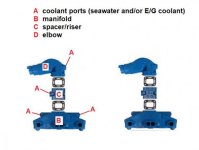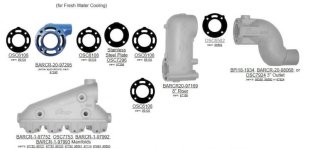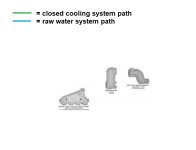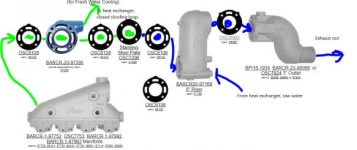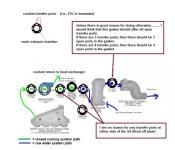Thanks for all the feedback but have one last question. I bought the Osco elbow and risers from ebasic as well as the gaskets. I'm hearing that some people use Permatex and other seat the gaskets dry. I'm going the dry route, and will check them every few months, but anyone think that's a bad idea and I should use sealant?
Many of these gaskets today call for NO sealant.
Can you see any info on the package that would suggest installing dry or installing with sealant?
Also, just confirming my set up - existing spacer > single hole gasket > block-off plate > single hole gasket > riser > 3 hole gasket > elbow.
In most cases, the block-off plate would be used for a Full Closed Cooling system whereby the manifolds would be part of the closed system loop.
If the Spacer/Riser is used to direct "spent" seawater up and to the Elbow, then the block-off plate would install between the manifold and Spacer/Riser.
Gaskets would follow suit!
If the Spacer/Riser is used to direct coolant (from the manifold) back to the closed cooling system, then the block-off plate would install between the Spacer/Riser and Elbow.
The Elbow would be ported and would be directly supplied with spent seawater.
Gaskets would follow suit!


